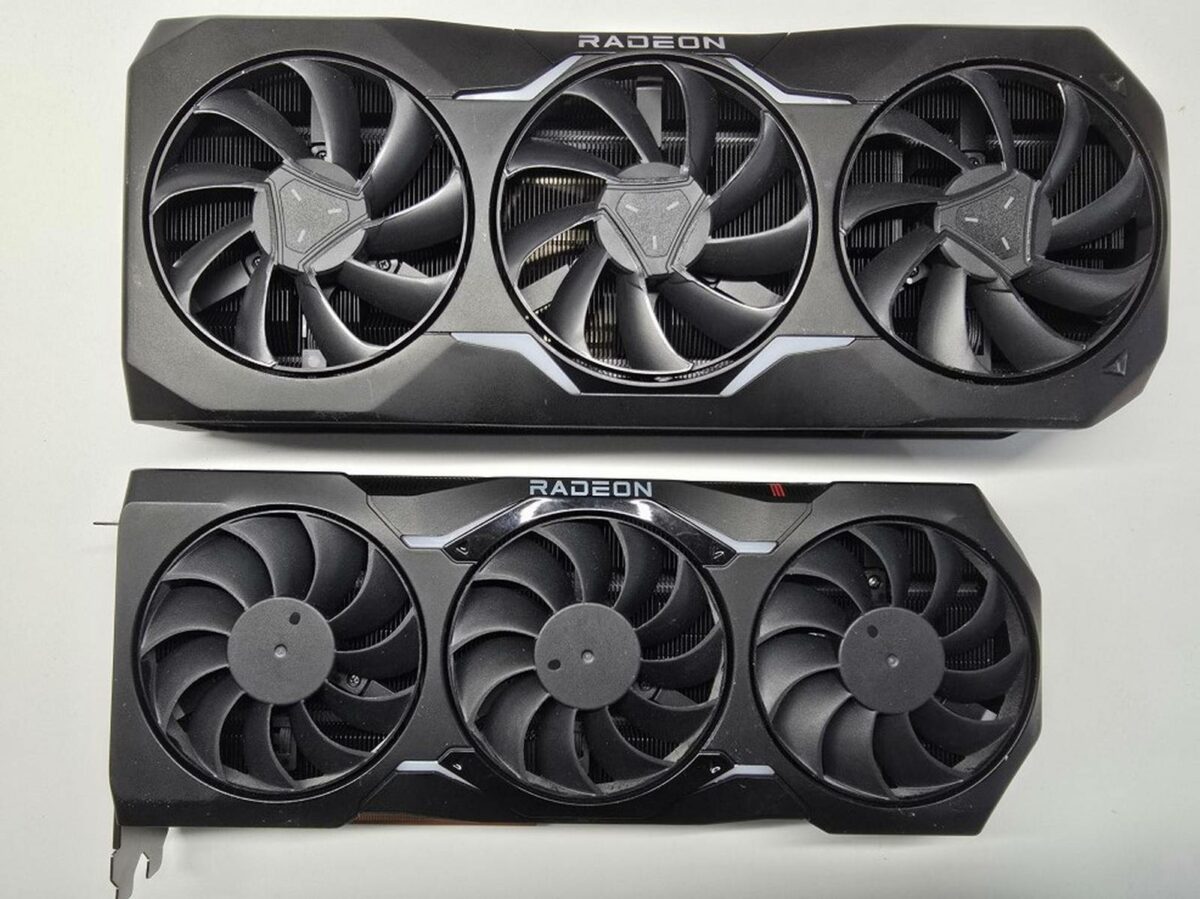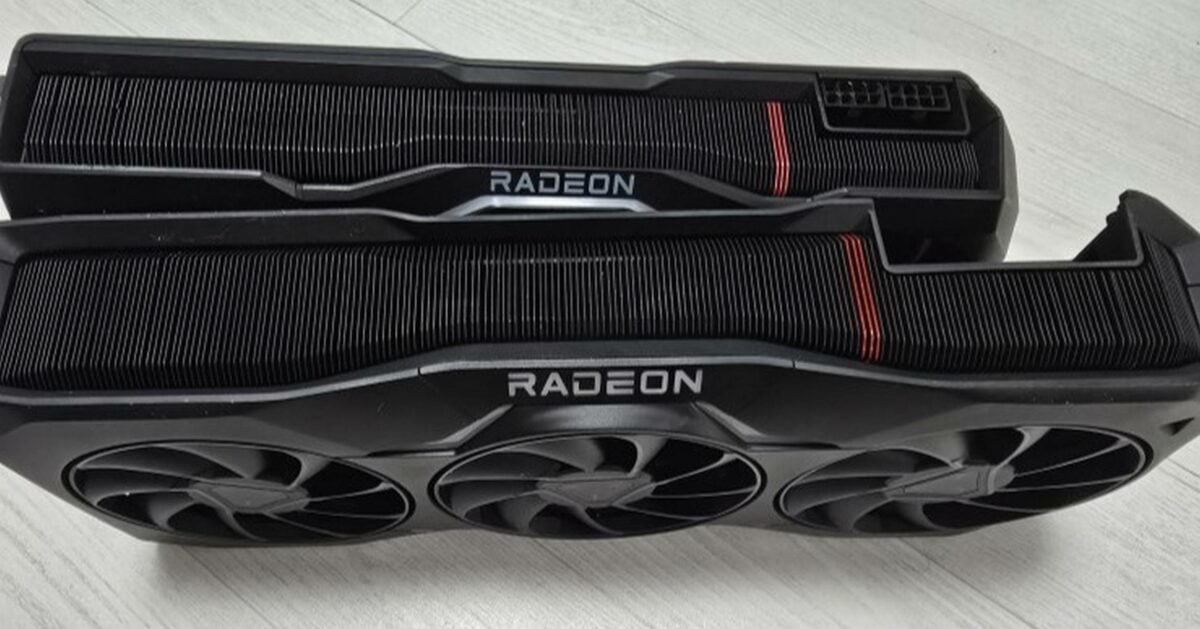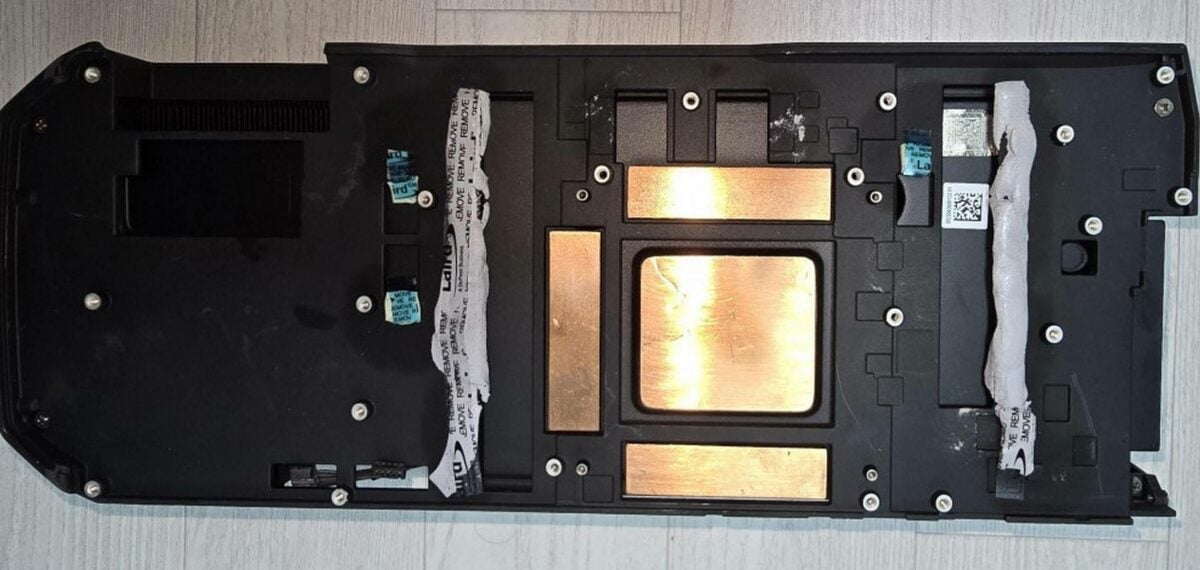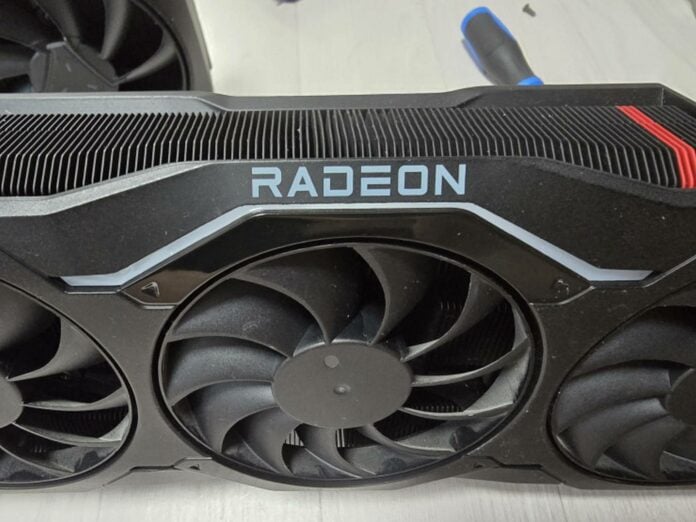AMD had seemingly been working on a much larger and probably faster Radeon 7000 Series graphics card, which never saw the light of day. A user on the Quasarzone forums has shared pictures of this potential RX 7950 XTX card, which they bought from China, showing its cooler assembly, but the PCB was missing.
Based on the pictures and information shared, the Radeon card is pretty much a bigger version of the reference Radeon RX 7900 XTX. To get an idea, the prototype cooler is 5.5cm thick compared to the reference RX 7900 XTX’s 4.2cm. It is also larger at 33cm compared to the 7900 XTX’s 29cm. Even the fans are bigger, making the card wider. Overall, this prototype is closer to the size of Nvidia’s RTX 4090 Founders Edition. Size aside, the card is slightly different from the reference RX 7900 XTX, splitting the LED strip into distinct sections while removing the glossy parts.

With room for up to triple 8-pin power, the GPU could have had access to up to 450W of power (excluding PCIe’s 75W), which would have offered more headroom for overclocking, and thus performance. Why not a bigger GPU, you may ask? Well, the high-end Navi 31 chip was already fully unlocked on the RX 7900 XTX, with 96 compute units active. This left only GPU frequency and memory speed as potential routes to improve performance. A performance that is likely to be maintained thanks to the larger cooler and increased power headroom. Though unlikely to have been enough to beat the RTX 4090 at the time, this would have at least allowed the RX 7000 lineup to compete strongly on the high-end, where Nvidia reigned supreme.

Understandably, the cooler is unfortunately incompatible with the reference card design, both due to its size and screw placements, meaning that the owner can’t test and compare its performance. That said, there is no doubt that this behemoth would have offered great thermals and acoustics on the reference RX 7900 XTX.

AMD had mentioned that it chose to avoid the halo tier products to focus on efficiency and performance per dollar. So, this is likely a remnant from an early development/test platform. While we would have liked to see it in action, this goes to show how some solutions hit a dead end, only reaching us years later in the form of unfinished prototypes.


